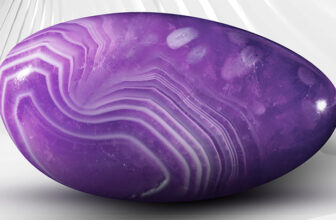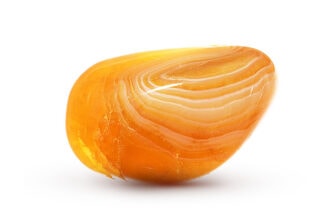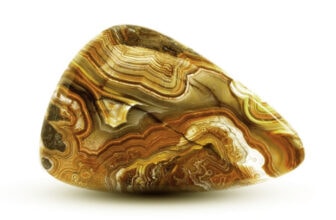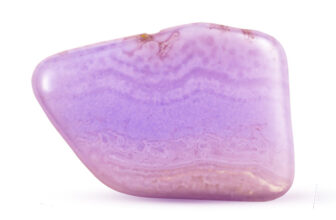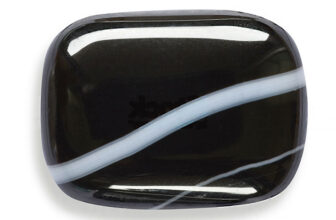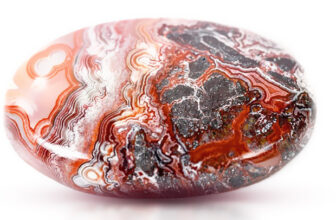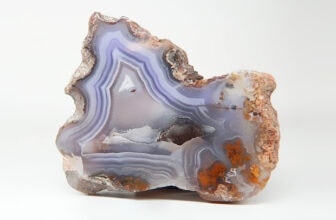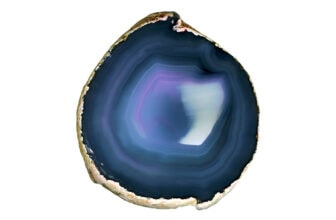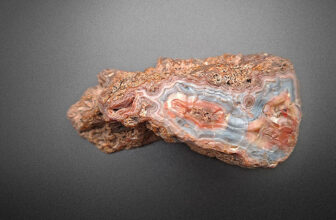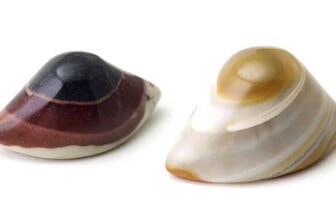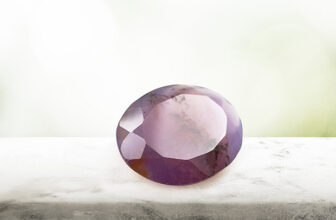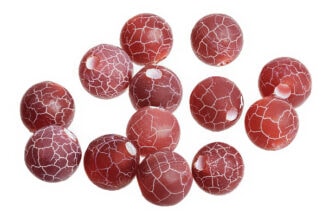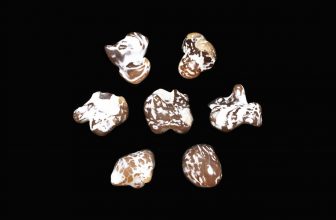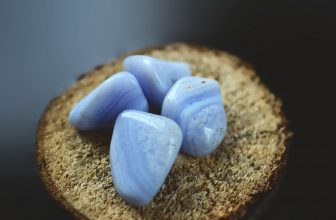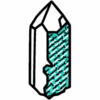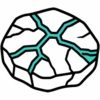Nodules
 Earth’s Hidden Treasures in Spherical Form
Earth’s Hidden Treasures in Spherical Form
Beneath the crust of the Earth, small miracles take shape – compact, self-contained worlds known as nodules. They’re the quiet secrets of the mineral kingdom: smooth, rounded, and deceptively simple on the outside, yet often breathtakingly intricate within.
But how does nature manage to craft these perfectly contained orbs of mineral beauty, tucked away inside layers of rock for millennia?
A nodule is a rounded or irregular mineral mass that forms within a host rock – a kind of self-made capsule distinct from the material around it. Unlike a crystal that grows freely in open space, or a geode with a hollow center, a nodule grows solid, layer upon layer, from mineral-rich fluids seeping through tiny cavities or voids underground.
Each one is a geological paradox – part of its host rock, yet entirely independent of it. They might appear as dull, unassuming lumps, but once cut open, their polished interiors reveal an astonishing range of colors, textures, and patterns. This hidden duality is what fascinates both scientists and crystal enthusiasts alike: they are nature’s secret storytellers, formed through chemistry but expressing pure artistry.
Collectors treasure them for their smooth forms and concentric designs, while energy workers value them for the sense of wholeness and contained energy they represent. Whether displayed on a shelf or held in meditation, nodules remind us that beauty often lies just beneath the surface – waiting for discovery.
The Science of Their Creation
Every nodule begins as a small geological possibility – a cavity, a pocket, a momentary pause in the solid fabric of rock. Into that space flows mineral-rich water, carrying the building blocks of stone: silica, calcite, pyrite, and countless trace elements.
Over time, the dance begins.
Molecules bond, layers accumulate, and the void gradually fills. What was once empty becomes solid, compact, and often remarkably symmetrical.
Let’s trace the process more closely:
- A tiny cavity forms within sedimentary rock – often due to organic decay, gas bubbles, or shifting sediments.
- Groundwater carrying dissolved minerals seeps into that space.
- As the fluid cools or its chemistry changes, minerals begin to precipitate – slowly depositing along the inner walls.
- Layer by layer, the deposit grows inward or outward, creating the smooth, rounded form we recognize as a nodule.
Unlike geodes, which remain hollow and crystalline inside, nodules grow completely solid. This gives them a heavier feel, a dense integrity that speaks to their nature as compact records of geological time. Many are also harder than the rock around them, which means they often survive erosion even when their host crumbles away – emerging like eggs from ancient stone.
The Many Faces of Nodules
Not all nodules are alike. In fact, they span a stunning spectrum of appearances and compositions – from silky whites and honeyed yellows to metallic golds and smoky grays. Each one tells a different geological story, painted in mineral hues.
Chalcedony and agate nodules are perhaps the most beloved. When sliced open, they reveal mesmerizing layers of translucent color – soft grays, blues, pinks, or fiery oranges. Every ring marks a moment in time, a pause in mineral deposition, like the growth rings of a tree. These are the nodules most often transformed into jewelry and polished cabochons, their inner worlds gleaming through glasslike surfaces.
Then there are flint and chert nodules, common in chalk or limestone. At first glance, they seem unremarkable – smooth, gray, and compact. But their fine-grained interiors have been prized since prehistoric times for their sharpness and durability. Tools, arrowheads, and ceremonial blades were often born from these ancient nodules.
Pyrite nodules dazzle in another way altogether. Their golden, metallic gleam forms when iron reacts with sulfur, replacing other minerals or organic material. Perfectly round pyrite spheres, sometimes called “fool’s gold marbles,” shimmer like planetary bodies captured in stone.
Meanwhile, calcite and aragonite nodules bring a softer aesthetic – creamy whites and honey tones with fibrous textures that glisten in the light. And then there are the dramatic septarian nodules, nature’s cracked mosaics of brown, yellow, and gray. Each one formed when mineral-rich solutions cemented fractures in mudstone, creating bold patterns that look like dragon scales – earning them the nickname “Dragon Stones.”
Wholeness, Patience, and Hidden Growth
In the metaphysical world, nodules are seen as vessels of contained energy – self-sustaining, calm, and complete. Their solid structure symbolizes a kind of inner fulfillment, the ability to hold and nurture energy without scattering it.
Their rounded form carries the vibration of unity. It represents cycles – of life, healing, and transformation – echoing the endless return to balance. To meditate with a nodule is to be reminded that everything essential is already within you; it simply needs uncovering.
The layers seen inside agate or chalcedony nodules mirror personal growth – each band an experience, each shade a lesson integrated into the whole. They invite reflection: What layers have we built through time? What wisdom have we gathered within ourselves?
Different nodules offer unique energetic qualities:
- Agate nodules encourage stability and inner peace. They ground emotional energy and help turn chaos into calm focus.
- Septarian nodules inspire communication, courage, and a steady sense of purpose – perfect allies for those navigating change.
- Pyrite nodules radiate vitality and confidence. Their golden shimmer connects with abundance and self-worth, shielding against negativity.

